To Utrecht
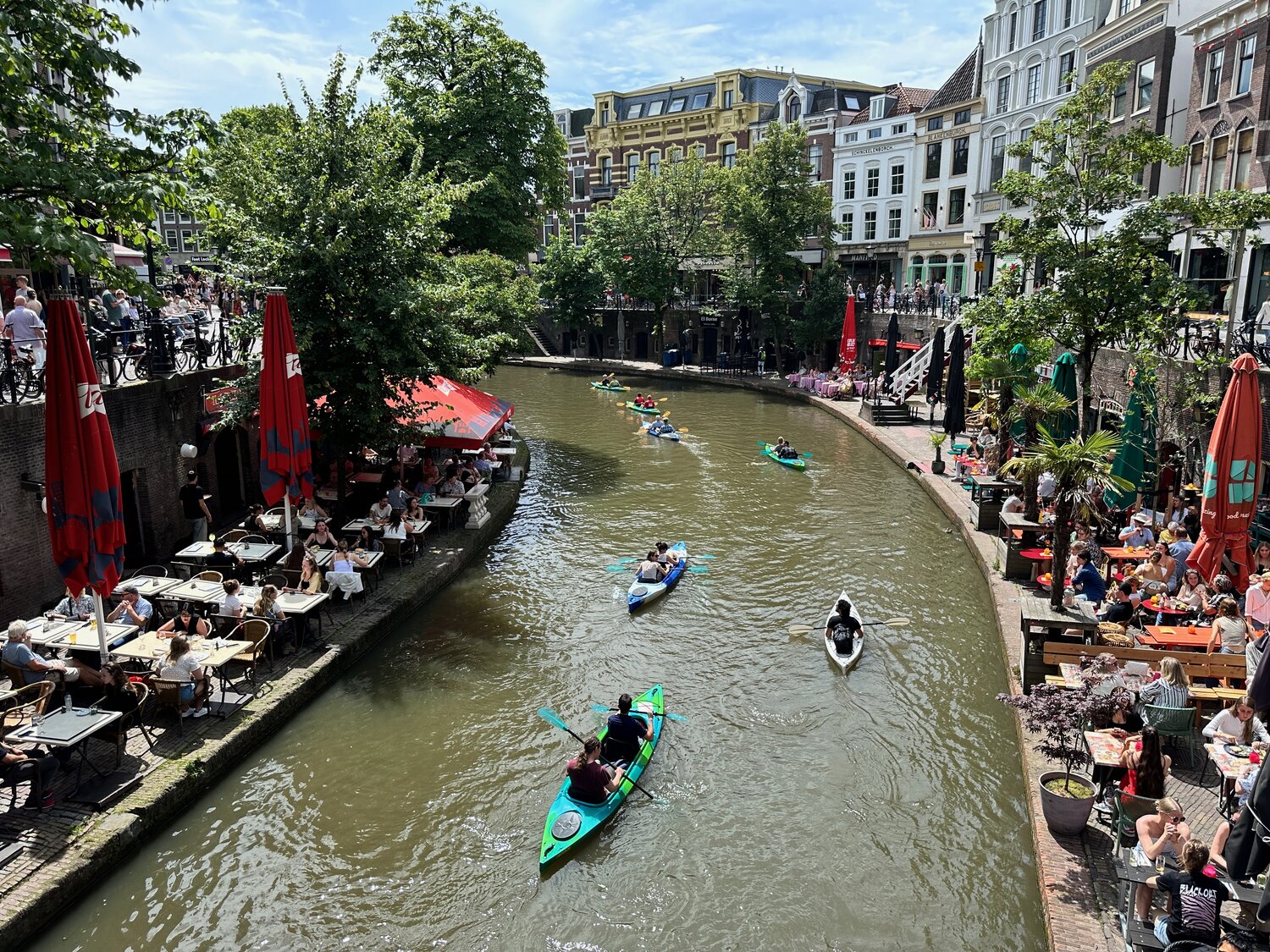
Utrecht at lunchtime, eating along the canal
Sorry for the delay in the new posting; caught a bug which put me out for a few days.
We made the fortunate decision to use Utrecht as our base in the Netherlands. We just love Utrecht.
Utrecht is built at a human scale - everyone walks or bikes (or boats on the canals). The streets are almost empty of cars. It is crowded, yes, a popular tourist destination, but somehow, because of the intimate, brick-based walking and biking paths, the three-story buildings, and the calming influence of canals, it seems less crowded than Amsterdam, which is much bigger and is filled with tourism.
All the roads here are brick. The Netherlands has very little stone at all, almost all stone is imported, but they have plenty of clay, so they make everything from brick.
Quick side-story: How rare are rocks in Holland? All the towns in the Netherlands have a nickname. Utrecht’s is “Domstad” - Cathedral City - because of the dominant spire of the Dom here (see pic below). Leiden is named the “Key City” because it’s symbol is a key, which is in its coat of arms. The town of Amersfoort has the nickname “Keistad,” or “Big Stone City” because they found a rock there, which they proudly display in a city square. The legend is about someone in the 17th century who found a big rock and made a bet that he could get the good citizens of Amersfoort to drag it into town, which they did when he offered them beer and biscuits. Embarrassed by their gullibility (and by the mocking of their countrymen), they buried the rock in 1672 where it remained until 1903 when it was dug up and put on display by the noble citizens of Amersfoort, apparently to proudly note that the town has a rock.
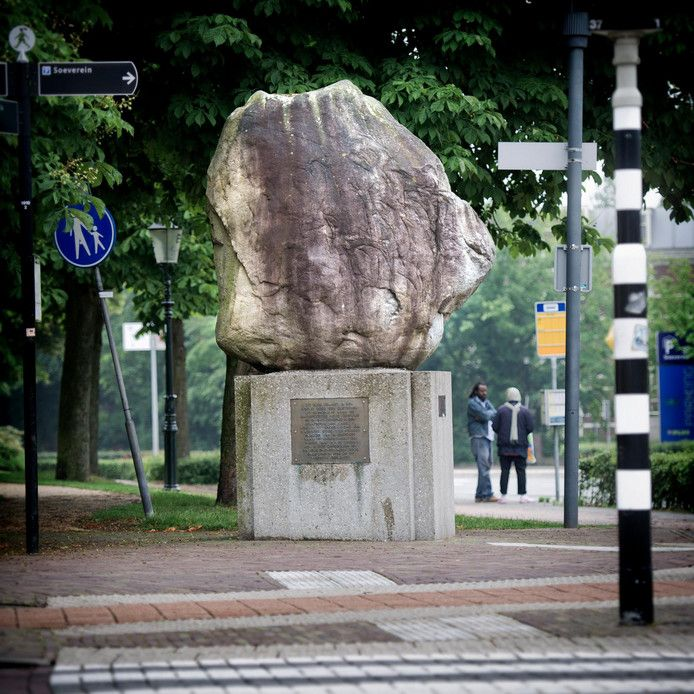 Amersfoort is very proud of their big rock
Amersfoort is very proud of their big rock
Back to Utrecht, which like Amsterdam but even more so, is FILLED with bicycles. Every street, every square, every possible place to stick or stack or store a bicycle is full of them. You have to learn the rules of walking in Utrecht; it is bicycles to look out for, not cars, and woe to the tourist who does not understand that you have to stop and look carefully at bicycle path crossings, or that you need to walk on the pedestrian strip of the road, not the bicycle lane (which looks the same, it’s all brick). Even in the rain, everyone bikes. People own old, ratty bikes called “city bikes” that they use to commute and run errands, and that, in general, aren’t worth much if they get taken (though the sentimental value can be high), and then a nicer bike (or two, or five) for recreation and family trips. There are all kinds of bikes for schlepping the kids - Children are towed in bike trailers, pushed in front in “cargo” seats, or stowed in conventional bike seats or on the cross beam. Kids go to school o bikes, are picked up on bikes. Not that so many bikes doesn’t cause its own problems, but boy, it is better than car congestion, and the air is clear.
 Utrecht - canals, brick walking paths, bicycles, and the “Dom” (cathedral) tower
Utrecht - canals, brick walking paths, bicycles, and the “Dom” (cathedral) tower
Had a wonderful time being shown around by Utrecht native Maarten Lamers, a professor of computer science (AI, robotics) at Leiden University. An outgoing, lovely person, he took us under his wing and we had a blast with him. His wife Ebeline works at the Speelkok museum, an amazing collection of self-playing musical instruments, from music boxes to clocks to large street and dance hall mechanisms. He gave us Utrecht lore and showed us the best places to eat. Really enjoyed our time with Maarten.
 Maarten and I
Maarten and I
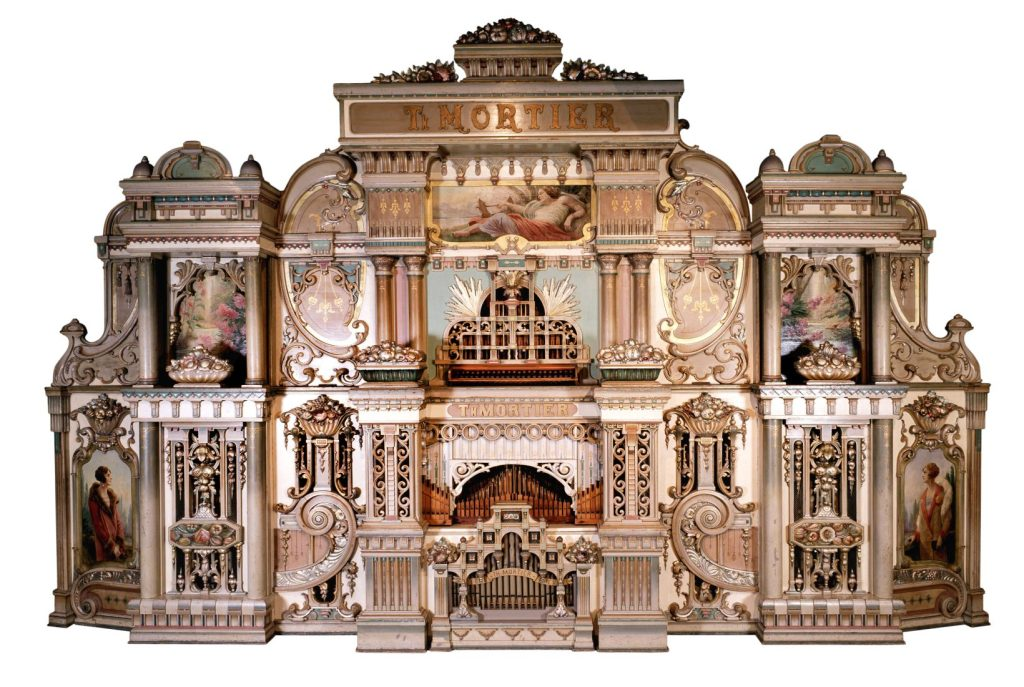 The enormous “Mortier” self-contained orchestra, an all-mechanical Dance Machine
The enormous “Mortier” self-contained orchestra, an all-mechanical Dance Machine
People in Utrecht stop and buy their groceries for that night’s dinner every day. Everything is fresh. They have wonderful open markets - we went to the country’s largest fabric market, literally hundreds of booths of fabric (Val bought fabric, even though we are traveling for another five weeks). And, of course, being Holland, enormous flower markets, bursting with color and varieties.
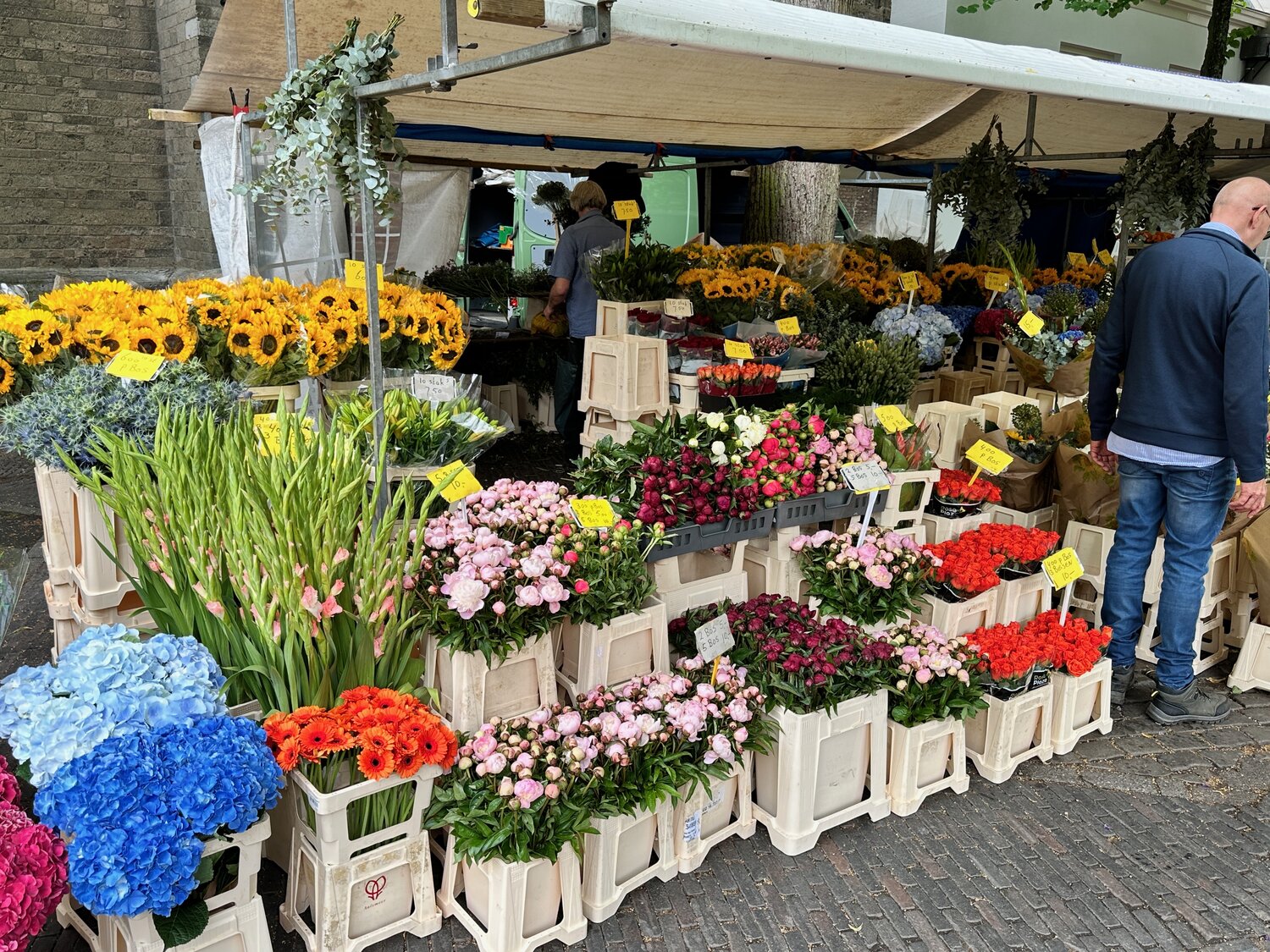
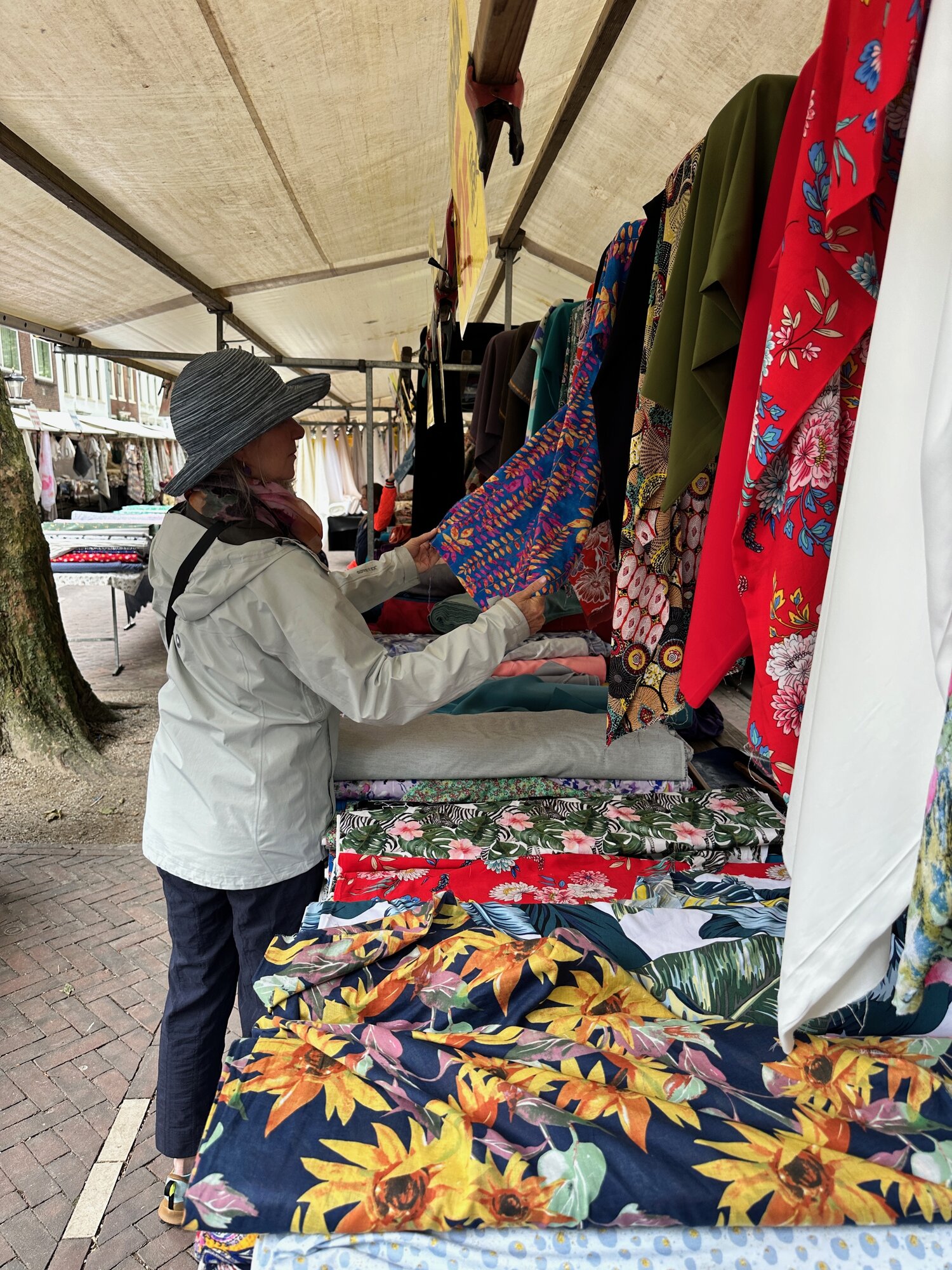 Val at the fabric market
Val at the fabric market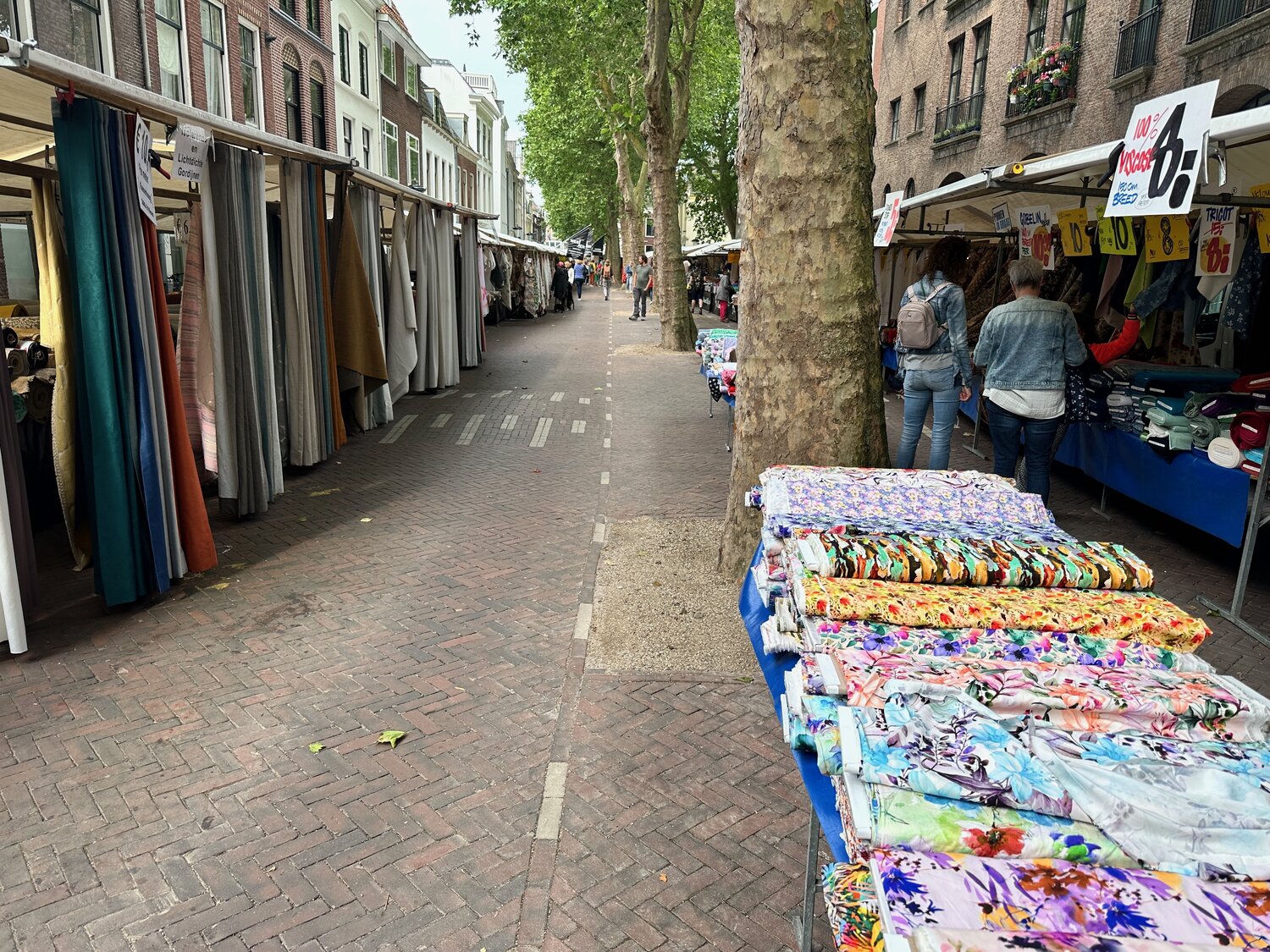 The fabric market seems to go on forever.
The fabric market seems to go on forever.
We also had the good fortune to be in Switzerland when the Swiss football (ie, soccer) team beat Italy in the Euro Cup, and in the Netherlands when they beat Turkey. The celebrations were fun, and we felt a part of it. In Utrecht we stood outside and watched the game at a pub with the natives. Loads of fun.
For the project of building the new Center, I met with David Laws, who works with the Transnational Configurations, Conflict and Governance group at the University of Amsterdam. He is a wise experienced hand in the conflict world, and had sage advice. The University of Amsterdam has a Masters degree in Conflict Resolution and Governance.
David pointed out that those who work on “human rights” can be in conflict with those who work in “conflict resolution.” A warlord, who might be the target of human rights activists for his violations, might be crucial to stop the shooting in a conflict. Hard to negotiate with him when others are trying to arrest him. Like others I have spoken to, David highlighted the tension between practice and theory, academia and applied mediation, and how a program can best balance the two.
He also stressed that conflicts go through different stages - not standardized - and that a conflict might not yet be ready for mediation or resolution (a “hot mess” is a term of the field), and that understanding the dynamic progression of a particular conflict is important. In local conflicts, community organizing might need to come before conflict resolution. Perhaps most importantly for me, given my background, David emphasized that conflict resolution has ethics at its core, where ethical reflection is central. He thinks discussion and exploration of ethics is neglected in a lot of CR teaching and programs. Perhaps that is one opening for makes a program at Emory unique?
Thanks, David. I remain amazed at the generosity in time and advice of the people I am meeting as I move forward with this project.
(Picture credits - all taken by me except the one of me and Maarten, taken by Val, and the Amersfoort rock and the Mortier dance machine, from the web.)



